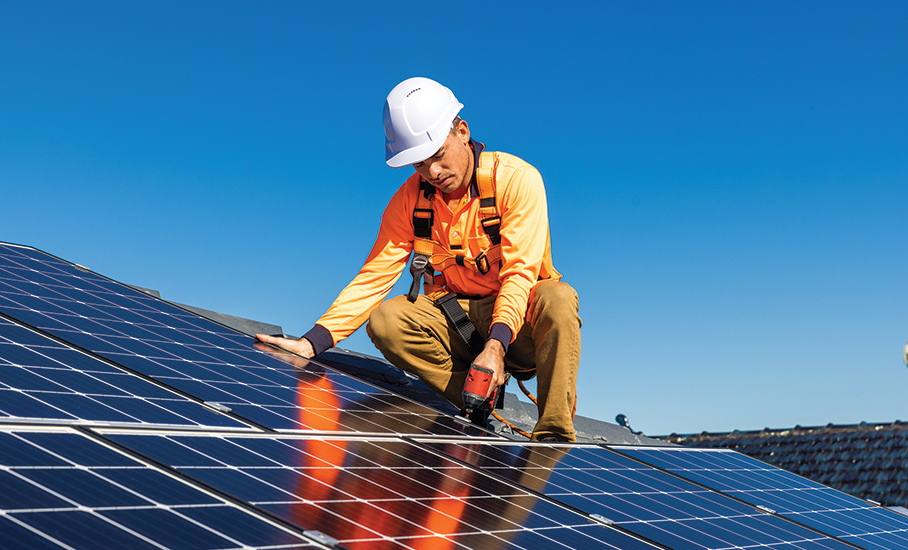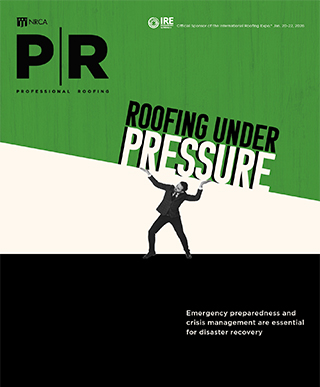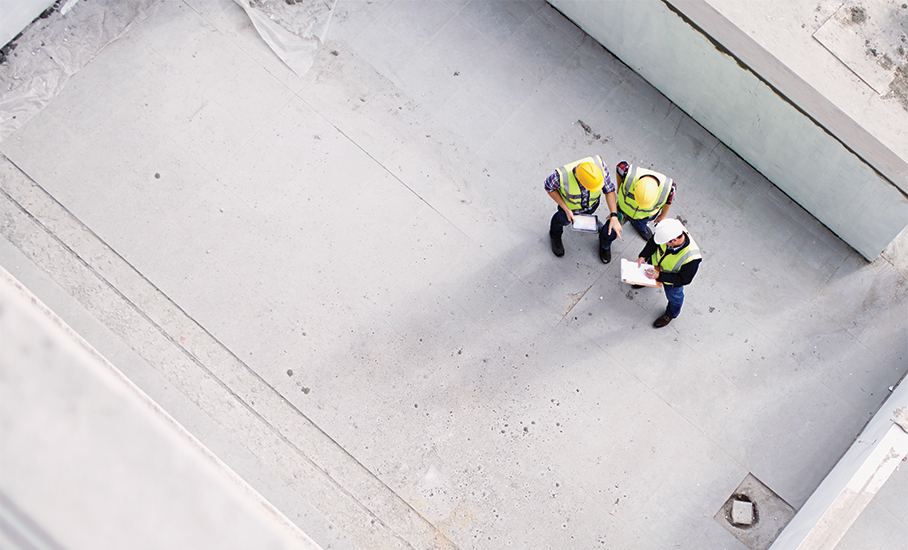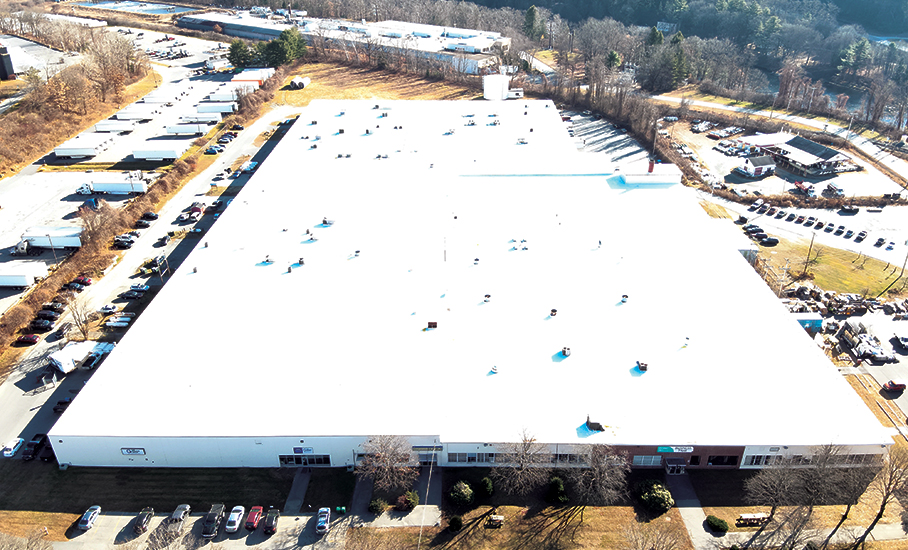
There is a movement within the building and construction industries to reduce carbon emissions and fossil fuel energy use in buildings. Renewable energy, which includes solar and photovoltaic roofing materials, can significantly contribute to that goal, and the roofing industry should be prepared to take advantage of this opportunity.
Considerations
Rooftop-mounted PV systems offer some advantages over ground-mounted PV systems by making use of otherwise underused rooftop space rather than valuable ground-level real estate. Rooftops also are relatively secure from passersby whereas ground-mounted systems typically need to be fenced off or otherwise secured to limit access. Additionally, some rooftop-mounted PV systems may not be visible to passersby.
Code requirements for rooftop building-integrated PV systems, including PV shingles, are included in the 2024 I-Codes and are complex. BIPV systems have dual functionality as roof coverings and electricity-generating products. This dual functionality can lead to confusion and disputes about who should install and maintain such systems.
Various code requirements further complicate the issue. NRCA believes rooftop-mounted PV system installation always should involve a professional roofing contractor and licensed electrician. A licensed electrician may be necessary to make interconnection to the electrical grid and oversee the proper installation of a PV system’s electrical components; most jurisdictions have requirements for licensed electricians to perform that function. Also, several states and local governments have enacted special licensing requirements for PV system installers.
In addition, rooftop-mounted PV system installations only should be undertaken with the involvement of a professional roofing contractor for several reasons, including his or her ability to assess the condition of roofs; knowledge of how to install new roof systems properly and safely to best accommodate rooftop-mounted PV systems; and awareness of roof system manufacturer’s requirements of “solar ready” installations for warranties. A roofing contractor also understands how to properly secure equipment on rooftops and apply flashing materials as well as how attaching equipment to a roof system may affect its long-term watertightness.
Roofing contractors also are aware of local building code requirements related to wind resistance, fire resistance, structural loads and access requirements.
Codes
Currently, the I-Codes have few specific requirements for PV- or solar-ready roof systems. The International Energy Conservation Code® has two appendices that contain general requirements for roof areas but apply only to new construction. The commercial appendix only applies to buildings five stories or less in height that are oriented between 110 and 270 degrees of true north or have low-slope roofs. The residential appendix requires a minimum of 150 square feet or 300 square feet of solar-ready roof area depending on the type and size of structure. Neither appendix speaks to the readiness of a roof assembly beyond roof loads.
The International Building Code,® Section 1505.9 “Rooftop mounted photovoltaic (PV) panel systems,” states: “Rooftop mounted photovoltaic (PV) panel systems shall be tested, listed and identified with a fire classification in accordance with UL 2703.”
It also states the fire classification of the system should be based on the type of building construction. Section 1604.5.2 “Photovoltaic (PV) panel systems,” states: “Rooftop-mounted PV panel systems and elevated PV support structures installed on top of buildings shall be assigned to the same risk category as the risk category of the building on which they are mounted.” This means the same PV system may not be installed on a warehouse and a hospital without modifications to meet a higher risk category.
PV quality
The quality of PV systems varies, so it is important to consider whether a roof system should have an expected service life equal to or greater than the PV system being installed on it. This helps minimize the need to dismantle or remove a PV system to provide for necessary repairs or completely remove a roof system to maintain building watertightness.
PV systems often are reported to have service lives up to 25 years. Roof systems, on the other hand, have service lives that vary significantly depending on the specific roof system design, roofing materials used, installation workmanship and owners’ maintenance. An industrywide roofing study conducted by the Roofing Alliance shows the average life expectancy of a low-slope roof system on a commercial building is 17.4 years. Based on this, NRCA has concluded above-average roof systems should be installed on buildings where rooftop-mounted PV systems are being installed or where rooftop-mounted PV system installation is anticipated.
Additional resources
PV modules are susceptible to damage resulting from hail. ASTM E1038, “Standard Test Method for Determining Resistance of Photovoltaic Modules to Hail by Impact with Propelled Ice Balls,” and FM 4478, “Roof-Mounted Rigid Photovoltaic Module Systems,” address the ability of PV modules to withstand the impact forces of hailstones.
Accumulated dirt, debris and atmospheric fallout can reduce PV systems’ efficiency. Cleaning solutions sometimes used to clean PV systems may be detrimental to roof coverings, such as those with strong alkali content. Verification with the PV and roof covering manufacturers should occur before cleaning a PV system.
There are many facets to installing and maintaining PV or solar materials on roof systems. Based on the current direction of energy codes and standards, roofing contractors may want to familiarize themselves with the potential added benefit of providing these services.

GLEN CLAPPER, AIA, LEED AP
Director of technical services
NRCA



